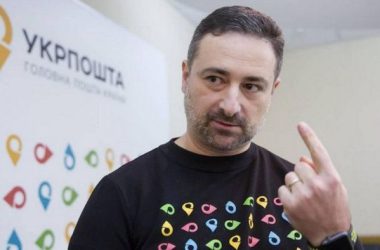Smart Modernization
After the war, Ukraine will face numerous challenges in restoring and building its transport infrastructure from scratch.
Many roads, bridges, railways, and ports have been severely damaged or destroyed. This destruction not only complicates the daily lives of citizens, but also create serious obstacles to economic development and international trade—limit the ability to transport goods, which negatively affects the country’s export potential and reduces investment attractiveness.
In addition, the existing infrastructure often does not meet modern standards of safety, efficiency, and environmental friendliness. Many facilities were built during the Soviet era and have not undergone significant updates since then. This results in high maintenance costs, frequent accidents, and a decrease in the competitiveness of the Ukrainian economy.
Denys Kostrzhevskyi, Chairman of the Board of Directors of Kyiv International Airport, assures, ‘Restoring and updating transport infrastructure after the war are very important tasks. This will help Ukraine develop economically, improve logistics, and integrate into the global economy. Also the introduction of modern technologies will make the transport infrastructure more efficient and safe, which will also have a positive impact on the environment’.
Examples of Smart Transport Systems
Digitalisation of transport networks involves the use of modern technologies for transport management, monitoring the condition of roads and bridges, and ensuring the interaction of various modes of transport. This helps make transportation more reliable, faster, and safer. For example, these can be the Internet of Things (IoT), which monitors the state of roads and bridges, or smart systems that control traffic in real time. These can also be geographic information systems (GIS) that help optimise routes. These technologies together create an efficient and integrated transport system.
In Singapore, data from cameras and sensors is used by experts to control traffic in real time, which helps avoid congestion and quickly respond to changes in traffic. In the Netherlands for example Talking Traffic system combines information from cars, public transport, and cyclists and provides guidance through mobile applications to avoid accidents and improve traffic flows.
Denys Kostrzhevskyi believes, ‘In Ukraine, such systems should be introduced in large cities like Kyiv, Lviv, and Kharkiv to improve traffic management and reduce the burden on roads. Their use on major highways and in urban areas can generally reduce the number of accidents by 20%. Therefore, digitalisation not only makes life more comfortable, but also allows quickly responding to emergencies and ensure road safety’.
He also believes that one of the main reasons for the destruction of Ukrainian roads, in addition to military operations, non-compliance with construction and operation technology, is the excess of weight standards of goods transported by Ukrainian roads.
‘If the roadway is designed for one load, and has cars regularly driving exceeding the design weight standards by two to three times, it inevitably collapses. It is necessary to develop a system of automatic weighing and fining of trucks for violation of dimensional and weight standards, and one that does not depend on the level of corruption of inspectors. The system should remotely transmit all data about the weight of the car, its owner, perform automatic analysis, and respond accordingly to violations using artificial intelligence systems’, Denys Kostrzhevskyi said.
Prospects
It should be noted that the integration of the Ukrainian system with European transport networks is inevitable in any case, because we are confidently moving towards the EU. This path opens up access to advanced technologies and best practices that can be adapted to Ukrainian realities. Ukraine should take advantage of this opportunity.
‘The involvement of European partners will help jointly finance and receive technical support for the modernisation of transport infrastructure. The introduction of automated systems, such as Smart Port, in ports and railways will significantly increase the efficiency of logistics operations. The development of smart transport systems in cities, the use of data from cameras and sensors for traffic control, as well as mobile applications for coordinating traffic participants, will improve traffic management and make roads safer. The introduction of innovative solutions for logistics and transportation will contribute to the increase in the number and quality of transportation’, Mr Kostrzhevskyi says.
An important element is also the training of Ukrainian specialists in the field of smart transport systems and digitalisation. We have to start preparing personnel for the effective implementation of these technologies and increasing the overall level of competence in the country.
It should also be remembered that the creation of favourable conditions for foreign investors through state support programmes, facilitation of procedures, and ensuring legal stability will also contribute to attracting capital for reconstruction and development.








